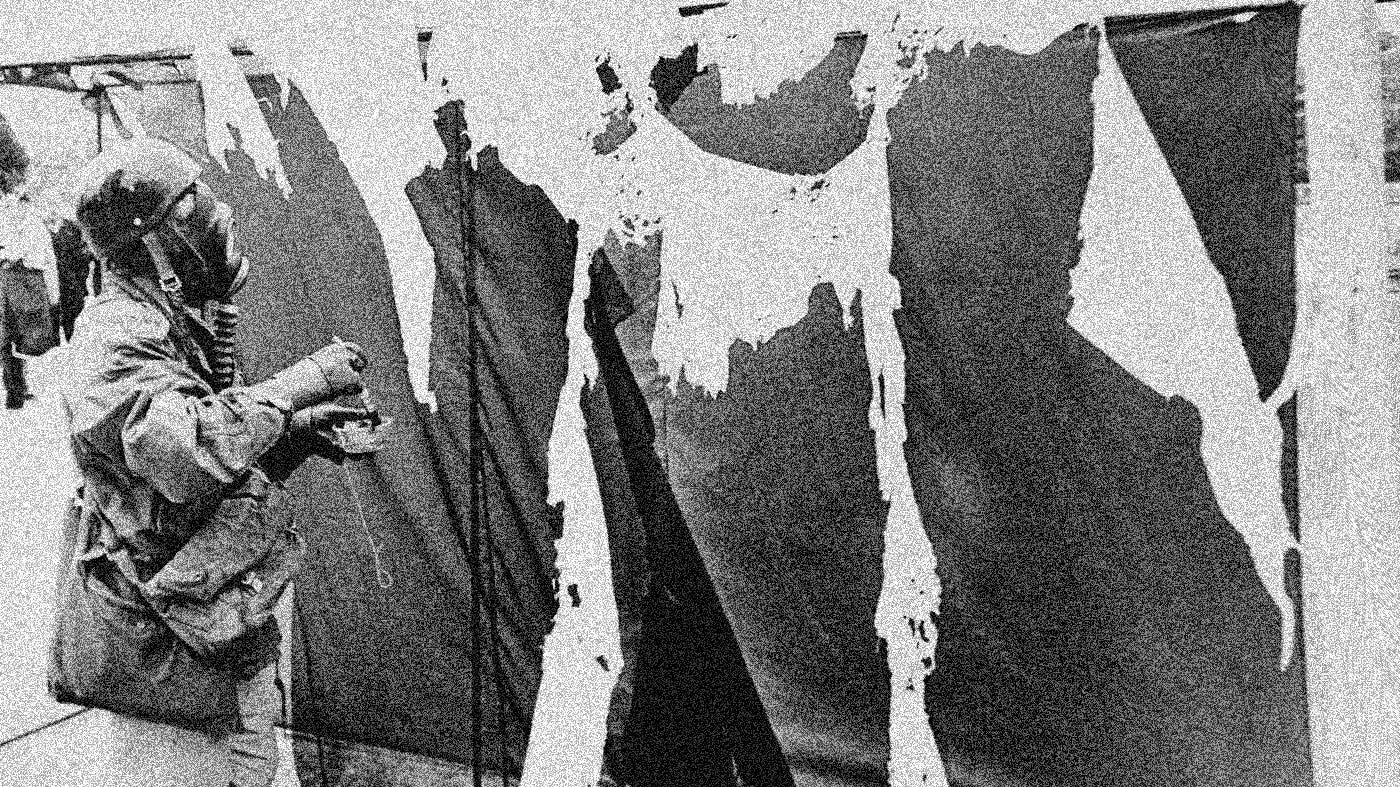Gustav Metzger saw chaos.
The world going to shit.
Two world wars (one hot, one cold) and rampant consumerism had convinced him of the industrial world’s true nature: destruction.
So he made art designed to decay.
Avowedly anti-materialistic, his work was protest. It wasn’t designed to last, hold court in galleries, change hands for millions. It couldn’t be celebrated indefinitely. His performances and installations would perish, using acid, heat and organics to create work that deteriorated, self-destructed. Sculptures that collapsed. Paintings that ate themselves. His work wouldn’t be part of rapacious consumerism, but return to an immaterial state.
He wasn’t alone.
William Gibson made something in the 1990s that always stuck with me. Agrippa – a multimedia book with a single-use, self-destructing floppy disk. You could read the poem once, before it destroyed itself, never to be useable again. Fitting: the internet doesn’t have a shelf life, and for all its gargantuan scale is a fragile library.
Destruction has a certain magic.
There’s something compelling about the song Guitar Drag, the plaintive drone of a guitar being excoriated by asphalt. Maybe Christian Marclay’s song was inspired by Ortiz, who made music by destroying pianos.
There are today throughout the world a handful of artists working in a way which is truly unique in art history. Theirs is an art which separates the makers from the unmakers, the assemblers from the disassembiers, the constructors from the destructors. These artists are destroyers, materialists, and sensualists dealing with process directly. These artists are destructivists and do not pretend to play at God’s happy game of creation; on the contrary, theirs is a response to the pervading will to kill. It is not the trauma of birth which concerns the destructivist. He understands that there is no need for magic in living. It is one’s sense of death which needs the life-giving nourishment of transcendental ritual.
– Raphael Montañez Ortiz, Destructivism A Manifesto (1962)
These are competing impulses, with the same foundation: the desire to create decay. We’re ephemeral, temporary, like Ana Mendieta’s human silhouettes, always to be erased by nature.
There’s a fabric treatment, devoré, where acid is used to dissolve the pattern. The word comes from the French: to devour. It’s a spoiling technique usually reserved for special fabrics – high-end textiles, like wedding dresses.
I believe that post-AI there’ll be a special respect for the kind of art that won’t last indefinitely. Work that can’t be easily generated, but must be experienced in its raw state, just for the moments it exists.
Decay is inevitable, important and beautiful. It reminds us to keep making.
.
.
.
Go further:








